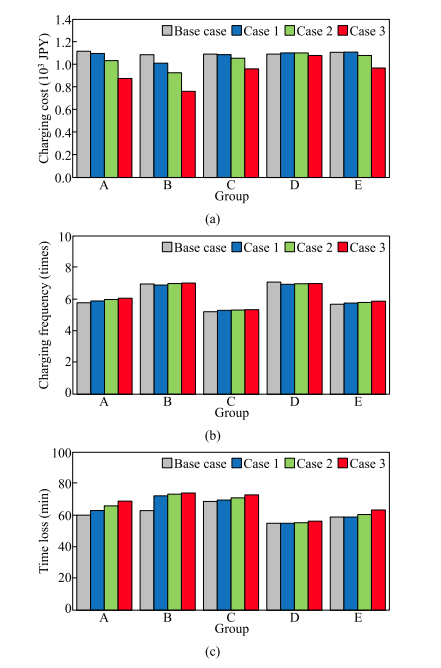・This study focuses on the provision of grid flexibility by public fast-chargers.
・The aim of the study is to develop an optimal charging model, which considers user convenience, and estimate the provided grid flexibility by battery electric vehicles (BEVs) fast-charging.
・The addition of an economic incentive to the charging rates encourages users to change their charging behavior.
Abstract
The development of renewable energy systems and BEVs is essential for achieving carbon neutrality. However, the large-scale introduction of photovoltaics (PV), whose generation fluctuates, necessitates high grid flexibility. BEVs can provide flexibility by controlling the charge/discharge of batteries. The charging model optimizes the charging period and amount of charge based on the charging rates. User convenience factors, such as the charging frequency and user psychology on charging, are considered. Simulations are performed using road traffic data, and the provided grid flexibility is evaluated. Three cases with different incentive rates and five groups with different user psychologies toward charging are examined. The simulation results indicate that BEV fast-charging can be used to provide grid flexibility. The fast-charging demand during the evenings and nights on weekdays, when electricity shortage is a concern, can be shifted to daytime on weekends when there is surplus electricity due to PV overgeneration.
Benefit
To address the deterioration of the grid-flexibility caused by the large-scale introduction of PVs, this study focused on BEV fast-charging for constructing an optimal charging modelconsidering the convenience of users and estimating the flexibility provided by BEV fast-charging. The simulation results prove that BEV fast-charging can be used for grid flexibility.
Market Application
The findings of this study can contribute to reducing PV curtailment, and support supply and demand balancing in power-system operation. In addition, because the model was developed considering user convenience, the results can be used to determine the potential location and number of charging facilities to be built in future.
Publications
https://ieeexplore.ieee.org/document/9939181/



